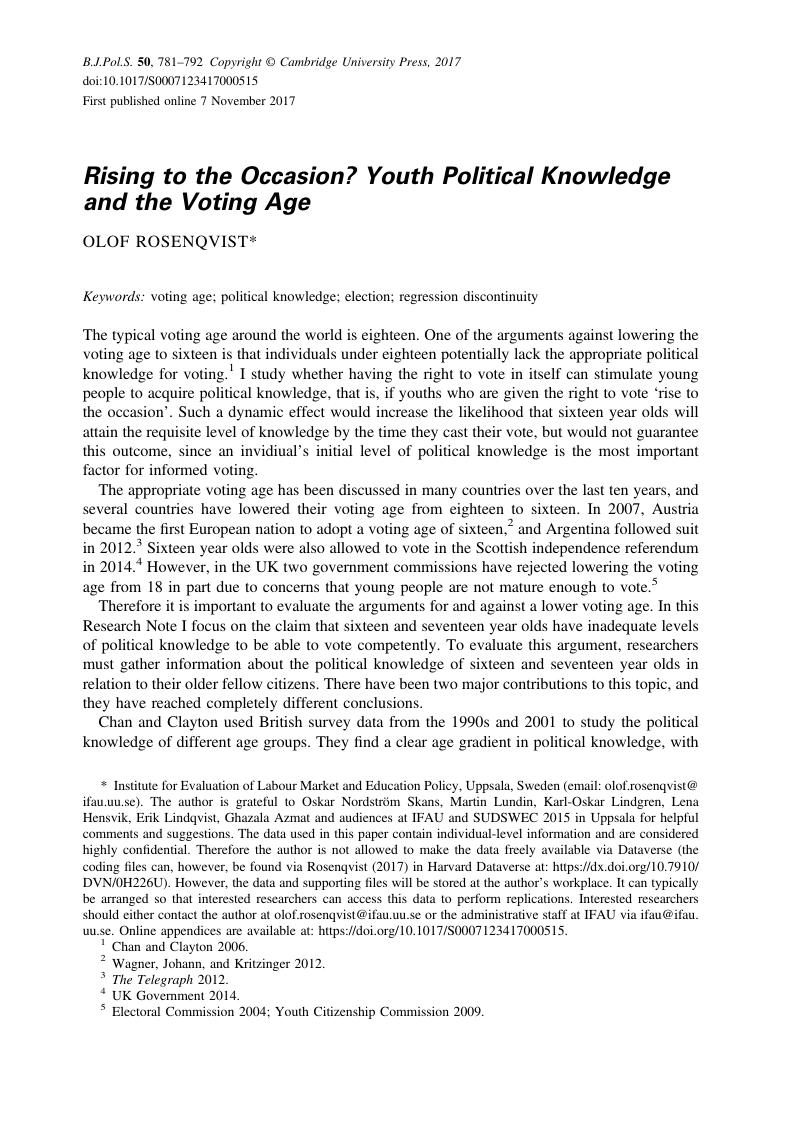Article contents
Rising to the Occasion? Youth Political Knowledge and the Voting Age
Published online by Cambridge University Press: 07 November 2017
Abstract

- Type
- Articles
- Information
- Copyright
- Copyright © Cambridge University Press 2017
Footnotes
Institute for Evaluation of Labour Market and Education Policy, Uppsala, Sweden (email: [email protected]). The author is grateful to Oskar Nordström Skans, Martin Lundin, Karl-Oskar Lindgren, Lena Hensvik, Erik Lindqvist, Ghazala Azmat and audiences at IFAU and SUDSWEC 2015 in Uppsala for helpful comments and suggestions. The data used in this paper contain individual-level information and are considered highly confidential. Therefore the author is not allowed to make the data freely available via Dataverse (the coding files can, however, be found via Rosenqvist (2017) in Harvard Dataverse at: https://dx.doi.org/10.7910/DVN/0H226U). However, the data and supporting files will be stored at the author’s workplace. It can typically be arranged so that interested researchers can access this data to perform replications. Interested researchers should either contact the author at [email protected] or the administrative staff at IFAU via [email protected]. Online appendices are available at: https://doi.org/10.1017/S0007123417000515.
References
- 9
- Cited by


